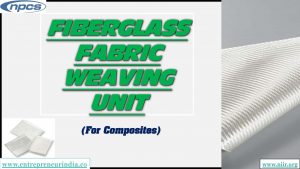
Introduction
For thermal insulation, an innovative design of fiberglass textile products was developed. The design is the result of extensive research into the construction of plain woven fiberglass textile and the factors that influence it. The selection of glass fibers, the manufacturing mechanism, and the level of insulation control were all highlighted. The new structure of thermal insulation fabrics was achieved using plain weave fabrics, tapes, and meshes methods. The work was expanded to include testing, characterization, and assessment of the various fiberglass textiles obtained in order to explain their performance and confirm the feasibility of the design conceived for the manufacture of these thermal insulation textiles in a variety of industrial applications, including welding, shipyards, refineries, power plants, and chemical plants, among others.
Uses Fiberglass Fabric
Glass fiber is made by extruding very thin strands of silica-based monofilament into fiberglass material. Glass is an amorphous solid, which means it lacks a crystalline structure in its solid state and instead behaves like a very viscous liquid. Because the thin fibers can easily bend, glass fiber lends itself to woven fabric. Glass fiber fabric has a high tensile strength, dimensional stability, heat and fire resistance, and resistance to a wide range of chemical compounds. Fiberglass fabric can also be used to dissipate heat and has electrical properties that make it suitable for use in electronic components.
Related Projects:- TEXTILE BLEACHING, DYEING, SPINNING, WEAVING, PRINTING, FINISHING AND TEXTILE AUXILIARIES PROJECTS
Manufacturing Process of Fiberglass Fabric Weaving
To form a cloth structure, the weaving machine, or loom, interlaces the warp and filling yarns according to a weave pattern. The warp refers to the yarn system that runs the length of the cloth. On a loom beam, it is delivered to the weaving machine. Ends are a term used to describe warp yarns. Weft or filling refers to the yarns that cross the warp. They are inserted in the cloth by a weft feeder on the new loom generation, allowing for frequent unwinding. Glass product can be woven in almost any weaving pattern. Plain, basket, twill and their derivatives, unidirectional, and leno weaving are the most common patterns used to make meshes.
There Are Five Basic Processes That Make Up The Weaving Process:
Mechanism 1: The warp is distributed to the loom by the let-off motion.
Mechanism 2: The warp yarn is moved up and down according to the weaving pattern by a warp shedding mechanism.
Mechanism 3: a filling insertion system places the filling between the openings of the warp yarns (also known as sheds), which is done by the shedding mechanism.
Modern picking systems are primarily used to fill glass products:
- Air jet
- Rapier
- Projectiles
- Needle (loom for narrow fabrics)
Mechanism 4: the filling between the warp yarns is beaten against the cloth in formation by a reed moved by the beat-up motion.
Mechanism 5: the filling density is controlled by a fabric take-up, and the fabric is wound onto a tube on the loom or by a separate winding device.
Related Videos:- Plastic Products
Market Outlook
Building and construction, automotive and transportation, wind energy, aerospace and Defence, chemical, and other end-use industries have increased their demand for fiberglass fabric. Because of their comprehensive set of characteristics, such as high tensile strength, dimensional stability, high heat resistance, fire resistance, excellent thermal conductivity, good chemical resistance, and more, fiberglass fabrics are in high demand in a variety of industries. Furthermore, because of its lightweight, electrical, and durable properties, fiberglass fabrics are widely used in electrical and electronics applications, which is expected to boost the fiberglass fabric market during the forecast period. In terms of value, the global fiberglass fabric market is expected to reach USD 13.48 billion by 2022, growing at a CAGR of 7.62 percent between 2017 and 2022.
Market Research; – Market Research Report
Key Players
- Everlast Composites Pvt. Ltd.
- Goa Glass Fibre Ltd.
- Jushi India Pvt. Ltd.
- Magnus Composites Synergies Pvt. Ltd.
- U P Twiga Fiberglass Ltd.
- SAERTEX GmbH & Co.KG
- Saint-Gobain Performance Plastics Corporation
- Tah Tong Textile Co., Ltd.
- Taiwan Electric Insulator Co., Ltd.
- Valutex Reinforcements Inc.